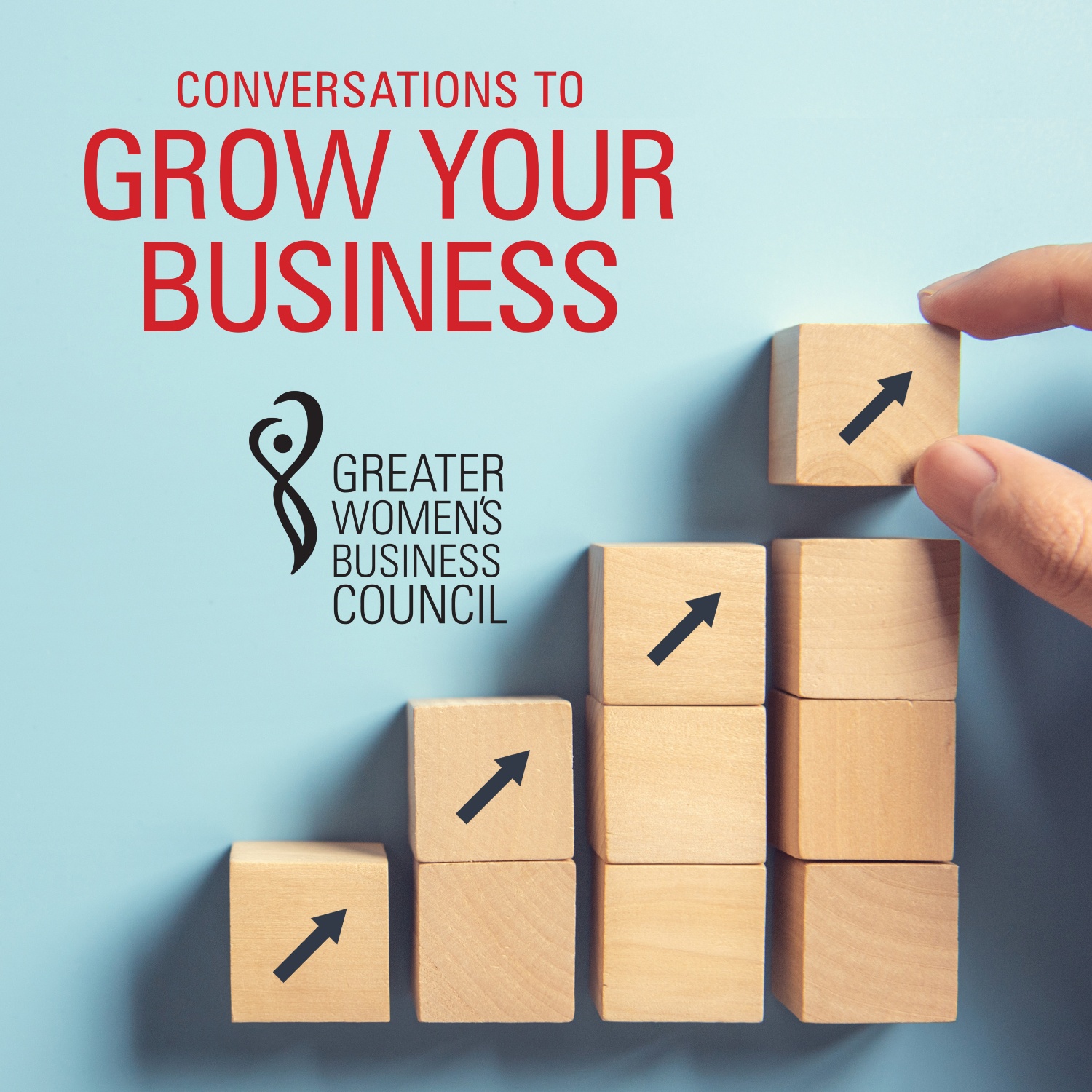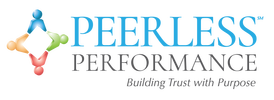

 Tina Weede is President and CEO of Peerless Performance and has a proven track record of more than 30 years delivering award winning and successful solutions that drive positive results.
Tina Weede is President and CEO of Peerless Performance and has a proven track record of more than 30 years delivering award winning and successful solutions that drive positive results.
The research and experience at Peerless Performance, a woman owned, WBENC certified Performance Improvement, Engagement, Culture Engineering and Incentive Agency, is focused on the workplace of the future, its generational mix, the interdependencies of its knowledge base and how employee and customer emotions drive not only the corporate culture but increase productivity, profitability, and community.
The Peerless Performance design team constructs highly targeted strategies needed to address specific challenges and opportunities, from employee engagement, culture engineering and leadership coaching, to communication, learning, rewards, recognition, incentive design, incentive travel, concierge travel, meetings and events, safety, and wellness programs.
Tina serves as the Vice President of Research and Content and sits on the Board of Trustees for The Society for Incentive Travel Excellence (Site) Foundation. Tina is also a Past President for Recognition Professionals International (RPI). She is an active member of the GWBC Mentor/Protegee and Voice Committees as well as a Mentor.
Follow Peerless Performance on LinkedIn, Facebook and Twitter.
Transcript
Intro: [00:00:04] Broadcasting live from the Business RadioX studios in Atlanta, Georgia, it’s time for GWBC Radio’s Open for Business. Now, here’s your host.
Lee Kantor: [00:00:18] Lee Kantor here. Another episode of GWBC Open for Business. And this is going to be a good one. Today, we have with us Tina Weede with Peerless Performance. Welcome, Tina.
Tina Weede: [00:00:29] Hi Lee. Thanks for having me today.
Lee Kantor: [00:00:31] Well, before we get too far into things, tell us about Peerless Performance. How are you serving folks?
Tina Weede: [00:00:37] Oh, I would love to. Thank you for the opportunity. Peerless Performance, of course, is a woman-owned engagement, coach engineering, and incentive company. And the services that we provide our clients, it’s really interesting how we pivoted this year because our big focus today is on employee engagement, culture engineering, and how to build emotional connections with those who represent your brand, which could be your internal employees, your channel partners, or your customers.
Lee Kantor: [00:01:13] So, now, you mentioned the crisis we’re going through today. And with more and more folks kind of working virtually, I bet there’s an extremely high level of need for a service like yours to help people through this.
Tina Weede: [00:01:27] Oh, there has been. It’s interesting when I look at the different tiers of organization. So, we’ve all been faced with different challenges. The larger companies, a little bit more prepared of having a remote workforce; where the middle tier, especially in manufacturing, has had a little bit more of a hardship. It’s hard to have those people out of your office.
Tina Weede: [00:01:55] But what we do and what we do really well with our clients is we go in and help our clients create the culture that, one, they thought they had or they hoped to have created. We build a level of engagement alongside with our customers to drive engagement through recognition, rewards and other tools that we have, some being technology, but others are exercises like going in and doing culture engineering, revamping your core values, making sure. Because everything we do should be tied to our core values. Our core values or are the heartbeat of our organization.
Tina Weede: [00:02:41] So, in designing recognition programs, we must design those programs based on that heartbeat of the organization. So, when we have a virtual workforce, communication is different, how we recognize those associates are different, how we reward those associates are different. And it’s even more important today that we allow and provide vehicles for those associates who are now working from home to have a voice within the organization.
Lee Kantor: [00:03:12] Now, you mentioned culture, and that is so critical. A lot of companies don’t invest a lot of time in their culture, even though that culture is one of those things that happen, whether you’re being mindful about it or not. So, what are some ways, maybe some advice you can give organizations, so that they can create that culture and create that kind of core value ubiquity that maybe happens organically when you are at a location, and we see the signs, and the look, and the feel of the office we’re in, but we don’t get those reminders when we’re working from home?
Tina Weede: [00:03:48] Well, it’s interesting because there are tools that are available that allow us to … it’s not the same as coming into the office, but some of the tools that we use and some of the technology that we use do allow us to have kind of that window into our culture because, to your point, you have a culture, whether you like it or not, whether it’s a good one, or a bad one, or something in between. And major employers are investing in their workers and their communities more today because they know that it’s the only way for them to be successful in the long term.
Tina Weede: [00:04:27] And that came from the chairman and CEO of JP Morgan. The relevance here today is regardless of whether you have a virtual workforce or you’re starting to bring your workforce back in today, it’s really focusing not on, necessarily, the plaque that hangs on the wall because, a lot of times, the plaque that hangs on the wall was created by leadership team. And it’s not something that may necessarily be lived throughout the organization. So, what we do is we come in and we create culture ambassadors within the organization by doing a cross-diagonal in the organization, looking at the existing core values, and really building a set of core values that are really being lived or are the goals to what the organization, what they want that to be.
Tina Weede: [00:05:17] The day of CEOs coming in and putting a pool table in the middle of the room, putting a wine cooler in the corner and letting everyone wear jeans, that’s not culture, right? That’s really a band-aid on something that really needs to be developed further.
Lee Kantor: [00:05:37] So, now, when you’re working with your clients, what is the pain they’re having where the answer is, “Well, we better call those Peerless Performance folks. They’ll be able to fix this”? Like, what are some symptoms of a problem?
Tina Weede: [00:05:53] Dissatisfaction, customer dissatisfaction, quality of work, missing deadlines, silos within your organization. We see that a lot of times. And there are two things that have to happen. I’m a previous president of Recognition Professionals International. And in our teachings and our certifications that we provide, two things have to happen for people strategy to be effective. You have to have the leadership buy-in, and they have to live the principles of your core values. They have to be servant leaders within your organization, and there has to be a strategy. And a lot of times, we find that companies miss that strategy or, either, there may be the removed discipline of having that leadership buy-in.
Lee Kantor: [00:06:49] So, now, is there any kind of low-hanging fruit organizations can do to kind of just build some sort of more emotional connections with the folks in their company?
Tina Weede: [00:07:01] Absolutely. So, when we look at the generational mix today, there’s one thing that everyone has in common, and it’s finding purpose in the work that they’re doing and making sure that they are contributing to the overall well-being of an organization. So, communication is critical. And that’s where we see, when we do some of our assessments, we see that there is a breakdown. It may be from top down or bottom up. A lot of times, it gets caught in the middle. And so, creating tools and processes, so that people feel as if they have a voice, that they are recognized.
Tina Weede: [00:07:40] The other thing that we teach at Recognition Professionals International is you cannot recognize someone too often from a positive standpoint. So, some of the fun exercises that we do with our clients – and they actually become team building – is when we bring these groups together and we see that there’s this compassion and there’s purpose. It’s they want to improve the overall well-being of the company. They want to improve their overall well-being of the company.
Tina Weede: [00:08:13] Now, of course, we’ve worked with clients who won’t let us get that close to their people, right? So, it all sits at the leadership team. And that, a lot of times, is a mistake because the leadership, in some cases, are going to see things differently than those within the organization. And that’s why a true leader is going to open that up to the organization to provide them with a voice, to provide them the opportunity to share their feelings.
Tina Weede: [00:08:47] And a lot of times, when we look at feelings and emotions, leadership will go, “Oh, my. I’m a little fearful of that,” but emotions tell you why people are doing something, right. So, if someone’s happy, they’re proud, or they’re angry, or they’re distressed, we can map programs based on the emotions of your associate, So, then, an associate’s feeling one way and they want to feel another way, we know how to design programs that promote that feeling. And feeling, again, goes back to why. Why is a driving force in every individual. How we do something and the way we do something, it can be trained.
Lee Kantor: [00:09:36] Now, how do you kind of deal with the leader who’s saying, “You know, all that sounds good, but I need metrics that I can measure. I need to see a dashboard that I can see we’re making progress”? Is there a way to measure any of this?
Tina Weede: [00:09:50] Oh, absolutely. I am so thrilled that you asked this question. So, I love what I do, but I’m also kind of a data nerd and a research nerd. So, I’m also the VP of Research and Content for the SITE Foundation. And I believe that through data, we provide greater levels of wisdom back to our clients. And so, every program that we design, we design with KPIs in mind and lead measures, so that either at the end of a cycle within a recognition program, or an engagement initiative, or even in incentive, we are able to look at those lead measures and see how we are reaching our goals at this point. And then, you can change things based on the behavior and the performance that you’re looking, really, to drive.
Tina Weede: [00:10:44] So, I’m in the process right now of working with Dr. Jack Phillips with ROI Institute out of Canada and Alabama. And his ROI methodology is the most widely adopted methodology in all the world. And we are looking at producing a book that allows us to take this methodology and apply it to rewards, recognition, engagement, initiative and incentives.
Tina Weede: [00:11:16] So, yes. So, long answer to your question, but yes. And I’m very excited about this. And we also have technology that allows us with certain enterprise-wide technology that we work with that allows you to see engagement scores, allows you to really look at safety standings that are looking at lead measures instead of lagging indicators. So, we’re very big into designing programs properly, so that you have measurable results.
Tina Weede: [00:11:51] And the other thing that I will add to that is when we look at engagement culture reform, different initiatives that, in the past, would have been looked at as kind of soft measures, soft benefits, we now are getting better at being able to monetize those benefits, so that they can go into the ROI analysis. But Dr. Jack Phillips will also tell you that those soft benefits, in many cases, are either equal or more important than the actual ROI measurement.
Lee Kantor: [00:12:30] Yeah, I’m a super fan of Jack and Patti Phillips at the OI Institute. We’ve done a lot of work with them over the years. And that’s fantastic that you’re able to adapt his methodology into your world. That’s fantastic.
Tina Weede: [00:12:44] Ain’t that amazing? I’m so excited. I have a phone call tomorrow about this. And I think it’s going to come to fruition. So, I’m very excited about it.
Lee Kantor: [00:12:54] Now, let’s talk about GWBC for a second. How has being part of that organization impacted your business?
Tina Weede: [00:13:02] Well, we’ve been a member for the last three years, and it has provided us with a voice. It’s made a great deal of many introductions. But it’s also the relationships that you build through GWBC are amazing. So, I’ve been a mentor for the last two years, and we have a great group of ladies on the Voice Committee. And part of it is in the world we live in today, diversity and inclusion is so important, and no one has a greater voice in the women’s community than GWBC. And I’m just thrilled to be part of a group with such amazing women. We learn from each other. We share best practices. We share heartaches with each other. And at the end of the day, it’s about doing better business, and we’re able to do that as well.
Lee Kantor: [00:14:08] Yeah, I find that a lot of folks that are part of that group, they find that the camaraderie and the shared experience is invaluable. And in terms of finding a safe place to maybe ask a question you’re uncomfortable in your own workplace is a very useful part of that reason of being a member. You have a lot of folks that are going through similar things that you’re going through, may be in totally different industries, but those things may not be exact but they rhyme.
Tina Weede: [00:14:39] Well, and the other thing it offers too are the women within my organization, different training opportunities, being involved at their level as well, and having a voice. I mean, not only does it provide resources to the actual active member or the the person who owns the company, but the resources are so rich for those within those companies as well, which has been a huge benefit for my company.
Lee Kantor: [00:15:11] Yeah, that’s a great point. A lot of people don’t kind of appreciate that going in that this is a benefit for the whole firm. It’s not just for the individual member.
Tina Weede: [00:15:21] Exactly, exactly.
Lee Kantor: [00:15:24] So, now, if somebody wanted to learn more, have a more substantive conversation with you or somebody on your team, what’s the best way to get a hold of you? Website or social media coordinates?
Tina Weede: [00:15:33] So, social media either personally through @tinaweede. Our website is peerlessperformance.net. And can I get my email?
Lee Kantor: [00:15:45] Sure.
Lee Kantor: [00:15:47] So, my email is tinaweede@peerlessperformance.net. And peerless is P-E-E-R-L-E-S-S Performance.net.
Lee Kantor: [00:16:01] Well, Tina, thank you so much for sharing your story today. We appreciate all the work that you’re doing. And it’s an amazing story.
Lee Kantor: [00:16:09] Well, we thank you. I appreciate this opportunity, and I love sharing our story. We’ve got a great story. And one thing I will end with is our purpose statement is every day, we get to enhance the quality of people’s lives. So, whether that’d be in our for-profit, which is Peerless Performance, are in our nonprofit, which is called Confetti Celebrations, we provide weekend retreats for women with cancer, it’s an amazing feeling every day, we come to work that that’s what we get to do. So, I’m just thrilled. So, thank you.
Lee Kantor: [00:16:43] All right. This is Lee Kantor. We’ll see you all next time on GWBC Open for Business.
About GWBC
The Greater Women’s Business Council (GWBC®) is at the forefront of redefining women business enterprises (WBEs). An increasing focus on supplier diversity means major corporations are viewing our WBEs as innovative, flexible and competitive solutions. The number of women-owned businesses is rising to reflect an increasingly diverse consumer base of women making a majority of buying decision for herself, her family and her business. 
GWBC® has partnered with dozens of major companies who are committed to providing a sustainable foundation through our guiding principles to bring education, training and the standardization of national certification to women businesses in Georgia, North Carolina and South Carolina.














